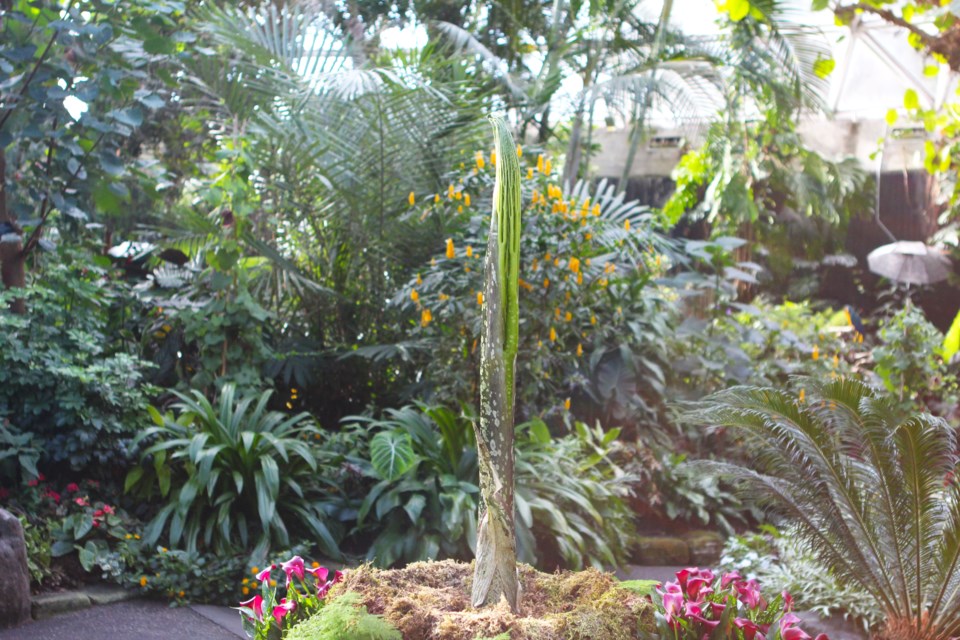If you want to see Uncle Fester in action (well, as much in action as a plant can get) without the stench, this fall will be your chance.
The famed plant, a rare titan arum (aka corpse flower), occasionally blossoms with massive, smelly blooms that have the odour of rotting meat. Uncle Fester has done that twice in Vancouver; the last time was in 2021.
This fall there will be no stinky flower.
Instead, the parks board and Bloedel Conservatory will be putting Uncle Fester's leaf on display.
“This will be the first time we display the titan arum at this stage of its life cycle,” says the conservatory's superintendent, Andrew Fleming in a press release.
The blooms are famously massive for the titan arum, and the leaves aren't small either, with a single leaf resembling a small tree. Often, only a single leaf is produced at a time. After the leaf grows, it'll absorb energy before dying off. The plant will then store that energy and either produce another leaf or a flower, though flowers are rare.
"After two years of dormancy, the 14-year-old plant began to grow again, soaring to nearly a metre in just the last month. In the coming weeks, this pace will amplify, with daily growth reaching up to eight centimetres," states the parks board.
Originally, from the Indonesian island of Sumatra, efforts are underway to conserve the endangered plant with conservatories around the world caring for several. Seeing the blooms has become a sort of attraction, there's even a Wikipedia list recording public blooms.
Tickets to the conservatory are $8.29 for adults. Teens (13-18) and senior (65+) tickets are $5.82 and kids (5-12) are $4.14.
"We are happy to report that Uncle Fester is currently on display at Bloedel Conservatory and welcomes visitors daily from 10 a.m. to 6 p.m. throughout September," a spokesperson tells V.I.A. "The plant will remain available for public viewing until it goes dormant again, which could take another 12 to 18 months."



